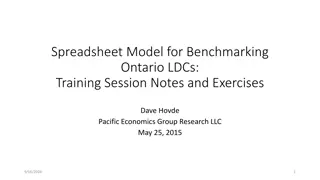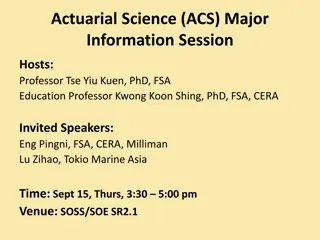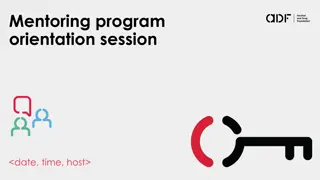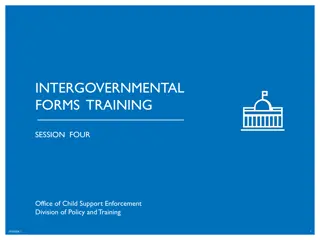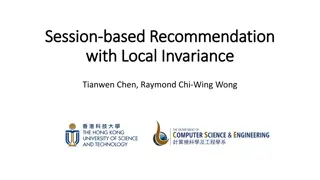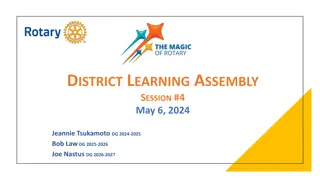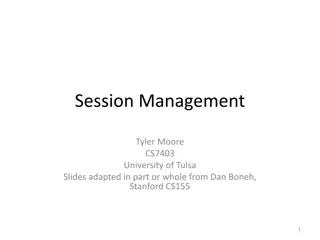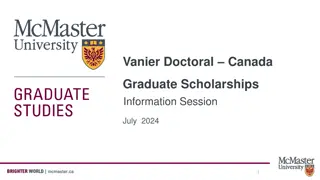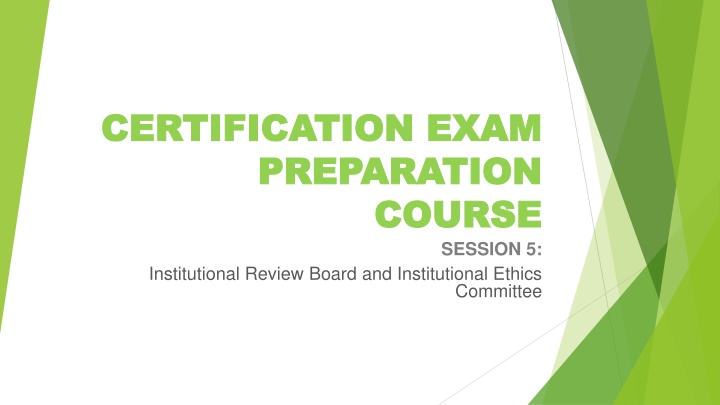
Institutional Review Boards (IRB) and Ethics Committees in Research
Learn about the Institutional Review Board (IRB) and Institutional Ethics Committee (IEC), their formation under the National Research Act in 1974, and the regulations governing human subject protection under OHRP and FDA. Gain insights into the functions of IRBs in reviewing and monitoring research involving human subjects, including approval, modifications, or disapproval.
Download Presentation

Please find below an Image/Link to download the presentation.
The content on the website is provided AS IS for your information and personal use only. It may not be sold, licensed, or shared on other websites without obtaining consent from the author. If you encounter any issues during the download, it is possible that the publisher has removed the file from their server.
You are allowed to download the files provided on this website for personal or commercial use, subject to the condition that they are used lawfully. All files are the property of their respective owners.
The content on the website is provided AS IS for your information and personal use only. It may not be sold, licensed, or shared on other websites without obtaining consent from the author.
E N D
Presentation Transcript
CERTIFICATION EXAM CERTIFICATION EXAM PREPARATION PREPARATION COURSE COURSE SESSION 5: Institutional Review Board and Institutional Ethics Committee
What is an Institutional Review Board (IRB) or Institutional Ethics Committee (IEC)? An IRB is an appropriately constituted group that has been formally designated to review and monitor research involving human subjects. ---Approve ---Require modification ---Disapprove Each institution may use whatever name it chooses. Regardless of the name chosen, the IRB is subject to federal IRB regulations when research is reviewed and approved.
When and how were IRBs formed? The National Research Act was passed by Congress in 1974. The Act established the existence of IRBs to review biomedical and behavioral research involving human subjects. National Research Act The Act also created the National Commission for the Protection of Human Subjects of Biomedical and Behavioral Research. This Commission was tasked in identifying the basic ethical principles involving human subjects research. The Commission published The Belmont Report in 1978. The Belmont Report Reference: Research Ethics: Institutional Review Board (IRB) Office - Northwestern University Reference: Research Ethics: Institutional Review Board (IRB) Office - Northwestern University
A Quick Review Two main sections of the Code of Federal Regulations (CFR) address human subject protection. OHRP Regulations (DHHS or HHS) 45 CFR 46 FDA regulations 21 CFR 50
45 CFR 46 (OHRP) Subpart A Subpart B Subpart C Subpart D Common Rule Pregnant Women Human Fetuses, and Neonates Additional Protections Pertaining to Biomedical and Behavioral Research Involving Prisoners as Subjects Additional Protections for Children Involved as Subjects in Research Additional Protections Pertaining to Biomedical and Behavioral
21 CFR 50 (FDA) Subpart A Subpart B Subpart C Subpart D Reserved General Provisions (scope and definitions) Informed Consent of Human Subjects Additional Safeguards for Children in Clinical Investigations Additional Protections Pertaining to Biomedical and Behavioral Additional Protections Pertaining to Biomedical and Behavioral Research Involving Prisoners as Subjects Pertaining to Biomedical and Behavioral Research Involving Prisoners as Subjects
Which Federal Regulations address IRB requirements and review? 45 CFR 46 Subpart A 21 CFR 56
Membership Requirements OHRP and FDA Regulations are the same. Each IRB shall have at least five members, with varying backgrounds . Each IRB shall include at least one member whose primary concerns are scientific areas and at least one member whose primary concerns are nonscientific areas. Each IRB shall include at least one member who is not otherwise affiliated with the institution and who is not part of the immediate family of a person who is affiliated with the institution. No IRB may have a member participate in the IRB with a conflict of interest. An IRB may, in its discretion, invite individuals with competence in special areas to assist.
When an IRB reviews a protocol involving prisoners as subjects that is conducted or supported by HHS: 45 CFR 46.304 requirement for prisoner research A majority of the IRB (exclusive of prisoner members) shall have no association with the prison(s) involved, apart from their membership on the IRB. At least one member of the IRB must be a prisoner, or a prisoner representative with appropriate background and experience to serve in that capacity.
OHRP All research involving human subjects conducted or supported by HHS or conducted in an institution that reviews all research in accordance with 45 CFR 46. When is IRB Review Required? FDA IRBs that review clinical investigations regulated by the FDA for: food and color additives drugs medical devices biological products electronic products
1. Risks to subjects are minimized. BELMONT BENEFICENCE 2. Risks to subjects are reasonable in relation to anticipated benefits, if any, to subjects, and the importance of the knowledge that may reasonably be expected to result. BELMONT BENEFICENCE Criteria for IRB approval of research 3. Selection of subjects is equitable. BELMONT---JUSTICE 4. Informed consent will be sought from each prospective subject or the subject s legally authorized representative. BELMONT RESPECT FOR PERSONS 5. Informed consent will be appropriately documented or appropriately waived. BELMONT RESPECT FOR PERSONS 6. When appropriate, the research plan makes adequate provision for monitoring the data collected to ensure the safety of subjects. BELMONT BENEFICENCE
7. When appropriate, there are adequate provisions to protect the privacy of subjects and to maintain the confidentiality of data. Criteria for IRB approval of research (cont.) 8. For purposes of conducting the limited IRB review, the IRB will make the following determinants: Broad consent is obtained in accordance with the requirements Broad consent is appropriately documented or waived Adequate provisions are in place to protect the privacy and confidentiality of subjects 9. Additional safeguards have been included in the study to protect the rights and welfare of vulnerable subjects.
Local vs Non-local IRB Review Local IRB is usually synonymous with the institution s IRB (university, hospital, community organization. Non-local IRB may be synonymous with a commercial IRB (for-profit IRB). A non-local IRB could also be called a central IRB . That could be a university IRB or other IRB (community). Local IRB s usually review studies under their scope; however, they can review a multisite study if they are the IRB of record . The IRB of record must always be documented for a research study. The revised federal Common Rule (1/21/2020) contains a new requirement for single IRB review for multi-site non-exempt human subjects research which are federally-funded or supported research.
Transferring IRB Oversight When a PI changes location or a sponsor transfers a clinical investigation to a different site, IRB approval will be required. If a Central IRB is the IRB of record, an expedited review may be required to change to a new location, approve consent form revisions, and update any changes in key staff. If there is not a central IRB, the new IRB of record may require a complete review.
IRB Authority Research covered by the regulations that has been approved by an IRB may be subject to further appropriate review and approval or disapproval by officials of the institution. However, those officials may not approve the research if it has not been approved by an IRB. An IRB shall review and have authority to approve, require modifications in (to secure approval), or disapprove all research activities covered by the regulations.
An IRB shall notify investigators and the institution in writing (outcome letters): Approve Require modification Disapprove If a study is disapproved: The outcome letter shall give reasons The investigator may respond in person or in writing IRB Communication with PI, Sponsor, Study Team
An IRB shall have authority to suspend or terminate approval of research. Suspension or Termination of IRB Approval of Research Any suspension or termination of approval shall include a statement of the reasons. The IRB shall report the suspension or termination promptly to the investigator, appropriate institutional officials, and the department or agency head.
Copies of all research proposals reviewed, approved sample consent documents, progress reports submitted by investigators, and reports of injuries to subjects IRB Record- keeping and Reports Minutes of IRB meetings Records of continuing review activities Copies of all correspondence between the IRB and the investigators
A list of IRB members with their characteristics, such as: earned degrees employment or other relationship between each member and the institution IRB Record- keeping and Reports (cont.) Written procedures for the IRB Statements of significant new findings provided to subjects
The records shall be retained for at least 3 years after completion of the research IRB Record- keeping and Reports (cont.) The records shall be accessible for inspection and copying by authorized representatives of the Food and Drug Administration at reasonable times and in a reasonable manner. The Food and Drug Administration may refuse to consider a clinical investigation if the institution or the IRB refuses to allow an inspection
Types of Categorical Review for Human Subjects Research Exempt Exempt Expedited Expedited Full Committee Full Committee R Review or Full Board Review Review eview or Full Board
The determination is usually made by: Human Research Protection Program (HRPP) or IRB office. How the Review Category of Subjects Research is Determined The HRPP or IRB office also may ensure alignment with: institutional policies ethical guidelines other relevant regulations and policies
How the Review Category of Subjects Research is Determined To determine the review status of human subjects research, ask the following three questions, in this order in this order: 1. Is the activity research according to the regulations? 2. Does the research involve human subjects based on the definition in the regulations? 3. Is the human subjects research exempt?
Test your knowledge
All research involving human volunteers in the United States is required to follow the Common Rule. Question 1 True or False?
All research involving human volunteers in the United States is required to follow the Common Rule. FALSE Not all work that we would call research is considered to be research under the Common Rule. The Common Rule defines research as: Question 1 answer a systematic investigation, including research development, testing, and evaluation, designed to develop or contribute to generalizable knowledge. And remember: a. The common rule applies to federally funded research. b. If the research involves a test article covered by FDA regulations, the research would be need to be conducted under 21 CFR 56.
An investigator plans to do a research project involving human subjects that is not funded by the Federal government. Can she proceed with her proposed project without IRB review? Question 2 Yes. Since it is not Federally funded, no IRB review is needed. Maybe. She should contact her HRPP or IRB office to find out what institutional requirements must be met. No. She will need to submit for IRB review regardless of funding or other rules since her project involves human volunteers.
An investigator plans to do a research project involving human subjects that is not funded by the Federal government. Can she proceed with her proposed project without IRB review? Question 2 answer Maybe. She should contact her HRPP or IRB office to find out what institutional requirements must be met. Investigators should always check with their institution s IRB office to see whether there are institutional policies to follow even if the regulations don t apply.
In deciding whether a project is non-exempt human subjects research under the Common Rule, what is the first question you should ask? Whether the statistical method in the research is sound Whether the research involves human subjects according to the regulatory definition Whether the activity meets the regulatory definition of research Whether the human subjects research is exempt o Question 3 o o o
In deciding whether a project is non-exempt human subjects research under the Common Rule, what is the first question you should ask? Answer: Whether the activity meets the regulatory definition of research Question 3 answer OHRP: Research means a systematic investigation, including research development, testing, and evaluation, designed to develop or contribute to generalizable knowledge. FDA: FDA regulations define the term clinical investigation or research to mean any experiment that involves a test article and one or more human subjects where the test article is regulated by the FDA.
Exempt: Exempt: Low risk, research activities in which the only involvement of human subjects will be in one or more of the categories defined as exempt research. Types of IRB Review The determination of an exemption has to be made by someone other than the investigator.
OHRP OHRP Exempt research (8 exemptions) When may a study be exempt from IRB oversight after the initial review? FDA FDA a. Any investigation which commenced before 7/27/81 (before current regulations) b. Emergency use of a test article, provided that such emergency use is reported to the IRB within 5 working days.
Exempt Research (1) Research, conducted in established or commonly accepted educational settings, that specifically involves normal educational practices that are not likely to adversely impact students opportunity to learn required educational content or the assessment of educators who provide instruction. This includes most research on regular and special education instructional strategies, and research on the effectiveness of or the comparison among instructional techniques, curricula, or classroom management methods.
Exempt Research (2) Research that only includes interactions involving educational tests (cognitive, diagnostic, aptitude, achievement), survey procedures, interview procedures, or observation of public behavior (including visual or auditory recording) if at least one of the following criteria is met: (i) The information obtained is recorded by the investigator in such a manner that the identity of the human subjects cannot readily be ascertained, directly or through identifiers linked to the subjects; (ii) Any disclosure of the human subjects responses outside the research would not reasonably place the subjects at risk of criminal or civil liability or be damaging to the subjects financial standing, employability, educational advancement, or reputation; or (iii) The information obtained is recorded by the investigator in such a manner that the identity of the human subjects can readily be ascertained, directly or through identifiers linked to the subjects, and an IRB conducts a limited IRB review to make the determination required by 46.111(a)(7).
Exempt Research (3) Research involving benign behavioral interventions in conjunction with the collection of information from an adult subject through verbal or written responses (including data entry) or audiovisual recording if the subject prospectively agrees to the intervention and information collection and at least one of the following criteria is met: (A) The information obtained is recorded by the investigator in such a manner that the identity of the human subjects cannot readily be ascertained, directly or through identifiers linked to the subjects; (B) Any disclosure of the human subjects responses outside the research would not reasonably place the subjects at risk of criminal or civil liability or be damaging to the subjects financial standing, employability, educational advancement, or reputation; or (C) The information obtained is recorded by the investigator in such a manner that the identity of the human subjects can readily be ascertained, directly or through identifiers linked to the subjects, and an IRB conducts a limited IRB review to make the determination required by 46.111(a)(7).
Exempt Research (4) Secondary research for which consent is not required: Secondary research uses of identifiable private information or identifiable biospecimens. (5) Research and demonstration projects that are conducted or supported by a Federal department or agency, or otherwise subject to the approval of department or agency heads (or the approval of the heads of bureaus or other subordinate agencies that have been delegated authority to conduct the research and demonstration projects), and that are designed to study, evaluate, improve, or otherwise examine public benefit or service programs, including procedures for obtaining benefits or services under those programs, possible changes in or alternatives to those programs or procedures, or possible changes in methods or levels of payment for benefits or services under those programs. Such projects include, but are not limited to, internal studies by Federal employees, and studies under contracts or consulting arrangements, cooperative agreements, or grants. Exempt projects also include waivers of otherwise mandatory requirements using authorities such as sections 1115 and 1115A of the Social Security Act, as amended.
Exempt Research (6) Taste and food quality evaluation and consumer acceptance studies: If wholesome foods without additives are consumed, or If a food is consumed that contains a food ingredient at or below the level and for a use found to be safe, or agricultural chemical or environmental contaminant at or below the level found to be safe, by the Food and Drug Administration or approved by the Environmental Protection Agency or the Food Safety and Inspection Service of the U.S. Department of Agriculture.
Exempt Research (7) Storage or maintenance for secondary research for which broad consent is required: Storage or maintenance of identifiable private information or identifiable biospecimens for potential secondary research use if an IRB conducts a limited IRB review and makes the determinations required by 46.111(a)(8). (8) Secondary research for which broad consent is required: Research involving the use of identifiable private information or identifiable biospecimens for secondary research use.
Expedited: Expedited: Not greater than minimal risk Not greater than minimal risk Types of IRB Review Involves only procedures listed in one or more of the expedited categories of the federal regulations Needs IRB review and approval Needs IRB review and approval
Definition of Minimal Risk Minimal risk means that the probability and magnitude of harm or discomfort anticipated in the research are not greater in and of themselves than those ordinarily encountered in daily life or during the performance of routine physical or psychological examinations or tests. 45 CFR 46 and 21 CFR 56 Definitions are the same for minimal risk.
Expedited Research (1) Clinical studies of drugs and medical devices only when condition (a) or (b) is met. a. Research on drugs for which an investigational new drug application (21 CFR Part 312) is not required. (Note: Research on marketed drugs that significantly increases the risks or decreases the acceptability of the risks associated with the use of the product is not eligible for expedited review.) b. Research on medical devices for which (i) an investigational device exemption application (21 CFR Part 812) is not required; or (ii) the medical device is cleared/approved for marketing and the medical device is being used in accordance with its cleared/approved labeling.
Expedited Research 2. Collection of blood samples by finger stick, heel stick, ear stick, or venipuncture as follows: a. from healthy, nonpregnant adults who weigh at least 110 pounds. For these subjects, the amounts drawn may not exceed 550 ml in an 8 week period and collection may not occur more frequently than 2 times per week; or b. from other adults and children [2], considering the age, weight, and health of the subjects, the collection procedure, the amount of blood to be collected, and the frequency with which it will be collected. For these subjects, the amount drawn may not exceed the lesser of 50 ml or 3 ml per kg in an 8 week period and collection may not occur more frequently than 2 times per week.
Expedited Research 3. Prospective collection of biological specimens for research purposes by noninvasive means. Examples: (a) hair and nail clippings in a nondisfiguring manner. 4. Collection of data through noninvasive procedures (not involving general anesthesia or sedation) routinely employed in clinical practice, excluding procedures involving x-rays or microwaves. 5. Research involving materials (data, documents, records, or specimens) that have been collected, or will be collected solely for nonresearch purposes (such as medical treatment or diagnosis). 6. Collection of data from voice, video, digital, or image recordings made for research purposes.
Expedited Research 7. Research on individual or group characteristics or behavior (including, but not limited to, research on perception, cognition, motivation, identity, language, communication, cultural beliefs or practices, and social behavior) or research employing survey, interview, oral history, focus group, program evaluation, human factors evaluation, or quality assurance methodologies.
Expedited Research 8. Continuing review of research previously approved by the convened IRB as follows: a. where (i) the research is permanently closed to the enrollment of new subjects; (ii) all subjects have completed all research-related interventions; and (iii) the research remains active only for long-term follow-up of subjects; or b. where no subjects have been enrolled and no additional risks have been identified; or c. where the remaining research activities are limited to data analysis.
Expedited Research 9. Continuing review of research, not conducted under an investigational new drug application or investigational device exemption where categories two (2) through eight (8) do not apply but the IRB has determined and documented at a convened meeting that the research involves no greater than minimal risk and no additional risks have been identified.
Full committee or full board review: Full committee or full board review: greater than minimal risk does not meet the guidelines for exempt or expedited review. Types of IRB Review requiring a convened committee, review and possible approval of changes annual continuing review
Definition of Minimal Risk Minimal risk means that the probability and magnitude of harm or discomfort anticipated in the research are not greater in and of themselves than those ordinarily encountered in daily life or during the performance of routine physical or psychological examinations or tests. 45 CFR 46 and 21 CFR 56 Definitions are the same for minimal risk.
Some examples of Full Board Studies Studies that expose the subject to radiation for the purposes of research Investigational drug studies High risk investigational device studies When information collected is sensitive, such as, criminal background, sexual history, abuse Studies where the threshold of blood exceeds the expedited threshold
Continuing Review When conducting continuing review and evaluating whether research continues to satisfy the criteria for IRB approval of research, IRBs should pay particular attention to the following four aspects of the research: Risk assessment and monitoring; Adequacy of the process for obtaining informed consent; Investigator and institutional issues; Research progress Recruitment Remember: A Full Board study can only be approved for 365 days. The approval time can be less if recommended by the IRB.






